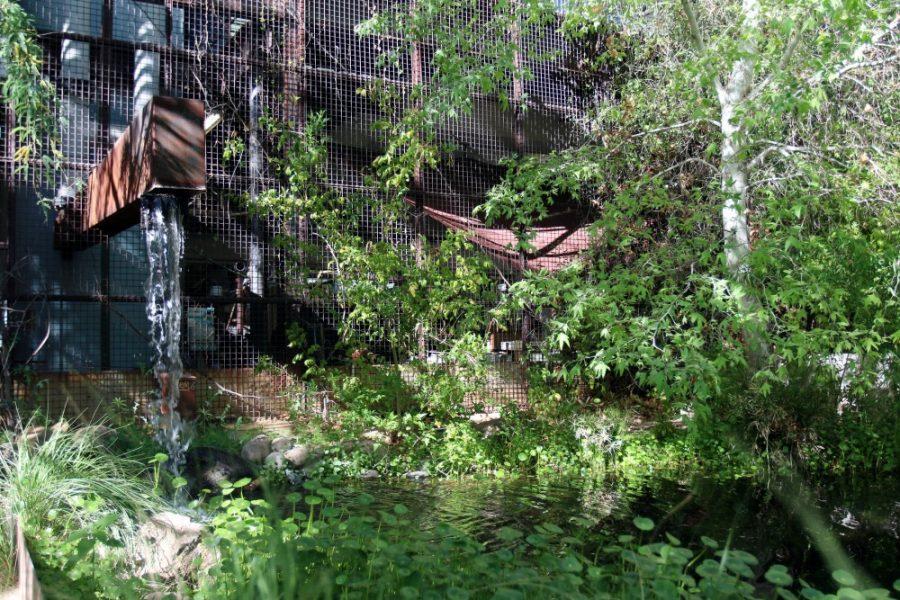Take a look at the programs at the UA and students have plenty to offer after their education at the university. Just last year, graduate student Rachel LaMantia took home the top prize at the 2015 Grad Slam for her plan to create sustainable housing for the Hopi Nation Tribe. That’s only one project that has sprouted from the mind of a UA College of Architecture, Planning and Landscape Architecture student.
The UA CAPLA has been working toward making the world a more sustainable place with the implementation of the sustainable built environments track since 2012.
While this specific program works for viable advancements in communities and the design of those communities, CAPLA as a whole is no newcomer to the idea of a greener Earth. Sustainability has been a strong ambition since the founding of the college in 1964, said Ladd Keith, leader of the sustainable built environments track and director of academic initiatives and student success at CAPLA.
“As a college as a whole, [sustainability] is really infused into every aspect [of the] program, whether there’s sustainability in the title or not,” Keith said. “It doesn’t need it in the title because all of our programs involve environment into the classes and just living in an arid region.”
Ideas of sustainable constructions are even visible throughout the design of the actual building that houses the college. Floor-to-ceiling windows allow for more natural light, saving and reducing the amount of consumed energy, and the vine-enabling lattice structure on the south side of the building provides a place for plants to grow and thrive.
What makes the world within CAPLA so unique is the interdisciplinary tie with a common concentration in constructing viable structures. Recently, the college introduced a college-wide curriculum dedicated to a sustainability-based education. This idea of “sustainable pedagogy,” as dubbed by the college, has been in action for the past two years. CAPLA is the only one of its kind in the country to have this specialized education not just in electives alone, according to CAPLA associate professor of practice Courtney Crosson.
“What’s exciting about the sustainable pedagogy is that you don’t see it in other architecture schools. It’s a holistic implementation,” Crosson said. “Usually what you’ll see at colleges of architecture is that they need to teach sustainability or some form of green design and they’ll offer electives … but what they don’t do is, from very beginning to very end, is actually have it integrated into each and every concept that you undertake as a designer.”
Crosson said the idea of this pedagogy, while it is clearly seen in the SBE track, has the overall goal of training students to keep the concept of sustainability in mind throughout all concentrations in the college. She is currently instructing a class that teaches the importance of sustainable design. Students in this class use real world examples on which to base a project on, and with one project in particular, they are able to examine the energy used in buildings on the UA campus and find ways to hypothetically renovate those buildings to be more energy efficient.
Back when this idea of sustainable education first began, assistant professor at CAPLA, Shane Smith, said that the actual curriculum, which tackles focus areas concerning the environment, water, energy, matter, wellness and culturation, sprouted from the task force that helped develop the system in 2013.
“We initially formed … a sustainability task force,” Smith said. “Our task force consisted of members strictly from within the school of architecture and we went through a very thorough literature review — academic journals, publications and journal articles — on how sustainability is implemented in other architecture curricula. We didn’t really find any to that extent.”
For the students, learning to make the world of architecture a more productive and green place is an important goal. Tynan Hartzell, a senior on the SBE track, works toward sustainable efforts daily. For this Arizona native, the idea of creating an environmentally viable place comes with living in this desert environment. With water and other natural resources being so scarce, he said the college as a whole has been forced to deal with architecture in conjunction with sustainable thought.
“Just being located in the desert, I think, … causes sustainability to be a core part of the college for a long time, before they ever advertised it, before sustainability was such a buzzword like it is today,” Hartzell said. “You have to mitigate for all the heat coming in from the Arizona sun. You have to create hospitable areas.”
Looking toward the future, Keith said the college plans to continue its curriculum of sustainable pedagogy to combat the growing challenges the earth faces. The program plans to tackle sustainability issues within the next few years.
Regarding social change, Keith and his colleague Michael Esser, coordinator of CAPLA, said those outside the program can also contribute to the fight of a more viable environment.
“Sustainability isn’t just a buzzword, it is something that we need have,” Esser said. “We need to look at how we live and look at more sustainable ways for the future because we have been living unsustainably.”
Follow Lauren Renteria on Twitter.









